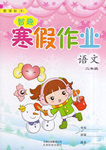题目内容
People talk with words. Do you think you can talk without words? A smile on your face __ that you are happy and friendly. Tears in your eyes tell __ that you are sad. When you __ your hand in class, the teacher knows you want to say __ or ask questions. You shake your head, and people know you are saying “ no”. You nod and people know you are saying __.
Other things can also give some __. For example, a sign at the bus stop helps you to know which bus to take. A sign on the wall of your school helps you find the library. Signs on doors tell you __ to go.
People talk to each other in many other __. An artist uses his pictures to tell about the blue sea, about beautiful mountains and many other things. __ write books to tell you about all wonderful things in the world and also about people and their ideas. They all help us to know __ is going on in the world.
Other things can also give some __. For example, a sign at the bus stop helps you to know which bus to take. A sign on the wall of your school helps you find the library. Signs on doors tell you __ to go.
People talk to each other in many other __. An artist uses his pictures to tell about the blue sea, about beautiful mountains and many other things. __ write books to tell you about all wonderful things in the world and also about people and their ideas. They all help us to know __ is going on in the world.
| 小题1: |
|
| 小题2: |
|
| 小题3: |
|
| 小题4: |
|
| 小题5: |
|
| 小题6: |
|
| 小题7: |
|
| 小题8: |
|
| 小题9: |
|
| 小题10: |
|
小题1:C
小题2:A
小题3:C
小题4:A
小题5:C
小题6:D
小题7:B
小题8:C
小题9:D
小题10:B
试题解析:本文大意:人们用词谈话,也可以不用词来谈话。脸上的笑容说明你开心友好,眼中的泪水说明你难过。上课时举手,说明你有事要说或有问题要问。摇头说不,点头说是。公交站上的标志让我们知道乘哪辆车,学校墙上的标志帮你找到图书馆,门上的标志告诉你到哪。画家用画,作家用书,都能告诉我们这世界正在发生什么事情。
小题1:考查动词。句意:脸上的微笑显示你是开心友好的。appears出现,brings out推出,shows展示,talks谈论。根据语境可知是笑容显示友好开心,故答案选C.
小题2:考查代词。句意:眼里的泪水告诉别人你是难过的。others 其他人,the others其余的(后接名词),other其他的(后接名词),the other另一个,与one连用。tell告诉,others间接宾语,that you are sad直接宾语,故答案选A.
小题3:考查动词短语。句意:当你上课举手时,老师知道你有事要说或问问题。put on穿,put out 熄灭,put up举起,put down放下。根据in class上课,可知是举手,故答案选C.
小题4:考查代词和语境。句意:见【3】。something某事(用于肯定句),anything任何事(用于否定句和疑问句),everything每件事,nothing没有事。根据you want to say你想说,可知是肯定句。根据语境可知是举手有事要说,故答案选A.
小题5:考查感叹词。句意:你点头,人们就知道你在说“是的”。no不,hello你好,yes是的,nothing没事。根据You shake your head, and people know you are saying “ no”.你摇头,人们知道你在说“不”,可知点头在说“是的”,故答案选C.
小题6:考查动词和语境。句意:其它事情也能给出一些信息。message音信,口头的或书写的消息,可数名词;saying格言;meaning意思;information信息,阅读、观察、谈话或书信往来中特别关注的消息、情报、资料等,侧重内容,不可数名词。根据语境可知是给出信息;some一些,可修饰可数与不可数名词,故答案选D.
小题7:考查疑问词。句意:门上的标志告诉你去哪。which哪一个,where在哪儿, how如何,what什么。门上的标志说明是什么地方的,故答案选B.
小题8:考查动词。句意:人们用许多其它方式彼此谈话。things事物,pictures画,ways方式,roads路。in ways 用方式,故答案选C.
小题9:考查名词。句意:作家写书讲述世界上所有奇怪的事情,以及人和他们的想法。Magicians魔术师,Traders 商人,Dentists 牙医,Writers作家。根据 write books 写书,可知是作家,故答案选D.
小题10:考查宾语从句。句意:他们都帮助我们去了解世界上正在发生的事情。it它,what什么,that那个,where在哪儿。know谓语,后接宾语从句,what在宾语从句中做主语,译为“……的事情”,故答案选B.

练习册系列答案
 智趣寒假作业云南科技出版社系列答案
智趣寒假作业云南科技出版社系列答案
相关题目